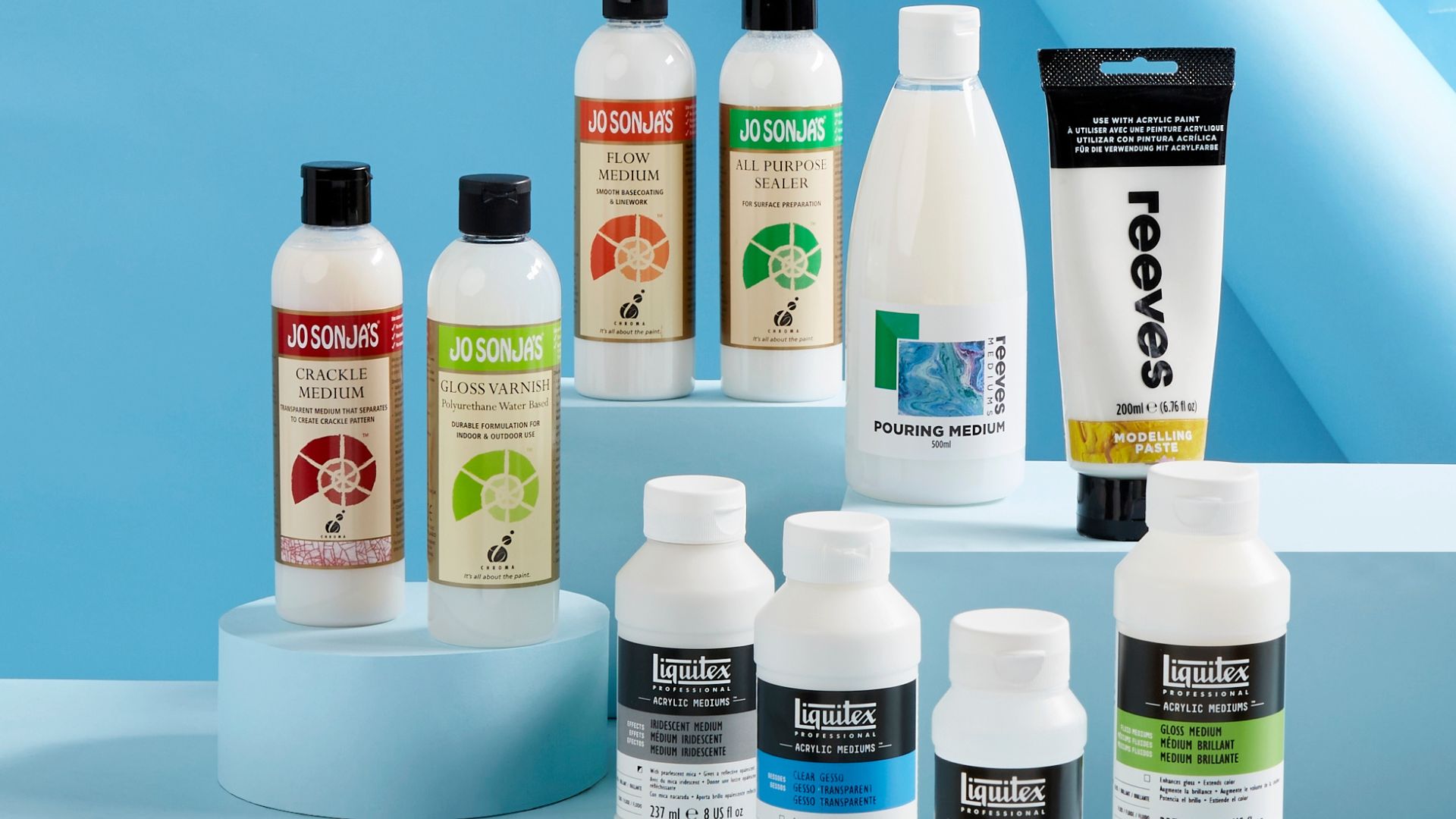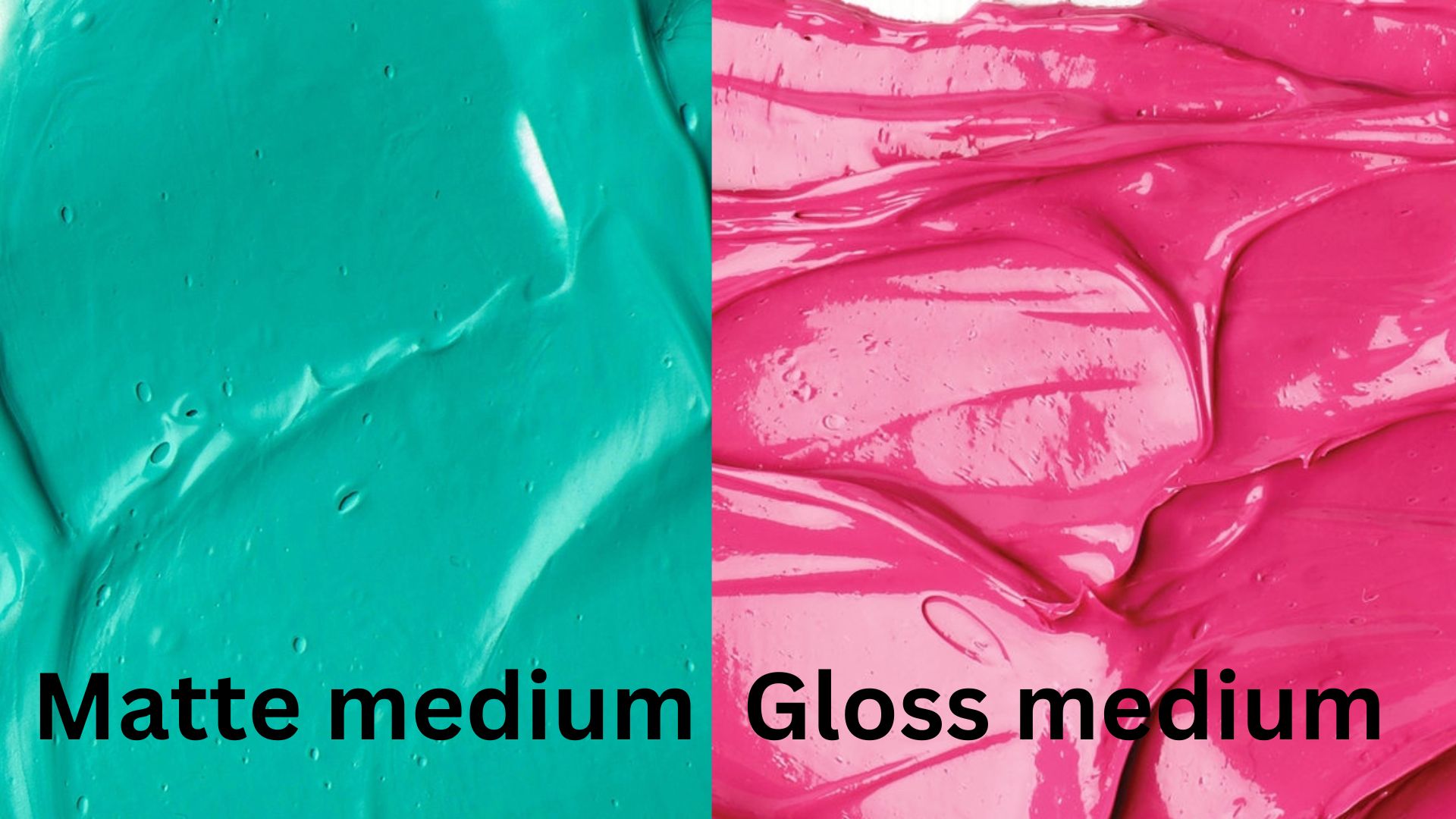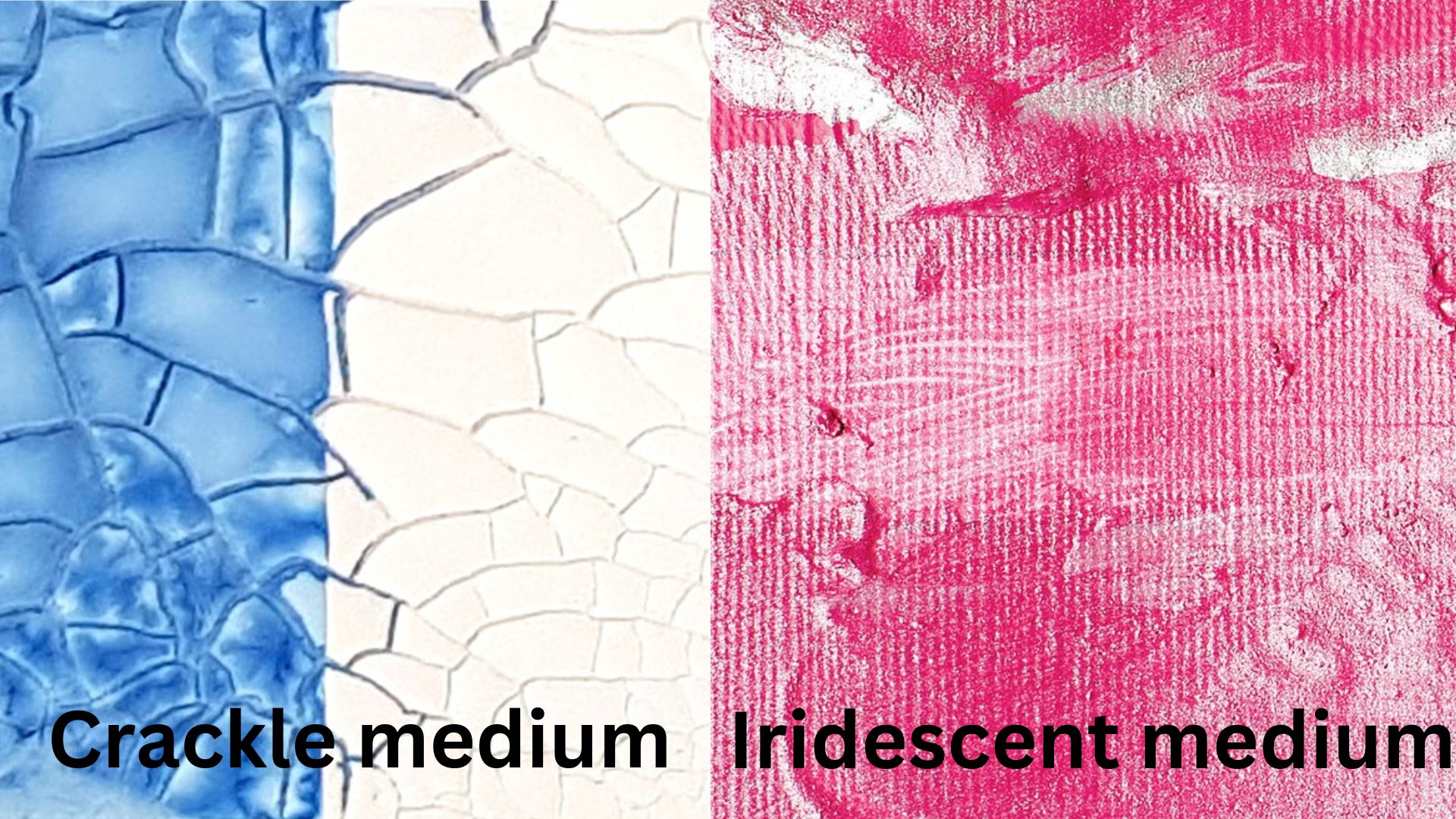 | ||
| Your browser is not supported. | ||
|
Please browse our site using any of the following options:
| ||
6 Acrylic Paint Mediums You Need To Know About

There's more to painting than just using paint, a brush and some paper! Mediums in art can be used to alter the properties of your paint, with mediums for acrylic paint being the most numerous and easiest to use. These mediums can give acrylic special visual effects, increased working time and other interesting benefits, and will be designed not to dull the colour or strength of the acrylic paint itself. But what is an art medium for acrylic paint, and how can you use them in your art effectively?
At Spotlight we have a great range of quality art mediums for you to choose from, with plenty of products from well-loved art brands such as Jo Sonja, Liquitex and Reeves. To help you make sense of it all, this blog will go through some of the most popular types of acrylic paint mediums, including how they work and what kinds of things you can do with them. Let's dive into the types of mediums in art, and what you can create with them!
Quick Links
- What is flow medium?
- What is texture paste medium?
- What is matte medium?
- What is gloss medium?
- What is crackle medium?
- What is iridescent medium?
What Is Medium In Art?
You may know your acrylic, watercolour and oil paints, but what is medium in art? A medium in art is a special additive you can combine with paint to change the properties of the paint. Mediums can be pastes, gels or liquids, and usually clear or white so as not to alter the colour of the paint.
You may also hear the word 'medium' used to describe the type of paint used to create art, as in acrylic, watercolour, gouache or oil. But in this context, we are using 'medium' to refer to the special effect additives artists add to their paints.
The Types Of Mediums In Art
We've narrowed down the huge list of mediums in art to just six we think you'll love using with acrylic paint!
What is flow medium?
One of the most popular mediums in art is flow medium. Flow medium can be added to acrylic paint to increase its fluidity - you could try to do this by adding water, but while it will indeed make the acrylic paint more fluid, it will also lighten the colours and reduce its adhesivity.
Flow medium works by breaking the surface tension of the water which is already inside the acrylic paint, resulting in a thinner paint that still retains its elasticity and smoothness. The amount of flow medium you add to your acrylic paint will depend on how thick your paint already is - for example, heavy body acrylic will require more flow medium than an acrylic that is already advertised as flow paint. Most of the time you will be adding twice as much flow medium as you have acrylic paint, but you can alter this depending on how runny you want your acrylic paint to become.
Once you have finished mixing your flow medium into your acrylic paint, you should have a colourful, high-viscosity paint that you can easily pour onto a canvas. For more information on fluid painting, read our blog on flow painting and pouring techniques!
What is texture paste medium?
If you want to add body, texture and strength to your acrylic paint, then you need some texture paste! Texture paste is a thick medium that can be clear or white, and also comes with other properties like gloss, matte or extended drying time - make sure to check the product you are interested in to see what properties your texture paste has.
Texture paste can be applied two ways - underneath the acrylic paint, or it can be mixed into the paint itself.
- Applying the texture paint directly to canvas on its own will allow you to create a textured surface to paint on later. You can create peaks, valleys, ripples, cracks and more using a painting knife or brush. Let the paste dry, then paint over with your acrylics! Wipe your brush quickly over the dried paste to only get colour on the peaks of your paste, or go slowly to make sure colour gets into every crack and crevasse of your texture medium.
- If you choose to mix your acrylic paint and texture medium together, it will alter the body of your acrylic paint to be much thicker than normal, almost like oil paint. Paint directly onto your canvas with your mixture, and use painting tools like knives and brushes to create the texture you want in your acrylic paint before it dries.
What is matte medium?
If you're finding your acrylic paint is a little too shiny for your tastes, a matte medium is what you need. Matte medium is a white liquid or paste that dries clear and can be mixed in with your acrylic paint or used over the top like a glaze.
Mixing matte medium with your paint won't affect the vivacity of your colours, but will make the paint thinner, more workable, more transparent and, most of all, ensure it dries without a shiny finish. This is ideal if you will be showcasing your art somewhere that is very well-lit or if it will be displayed under glass, as it will ensure any light won't bounce erratically off your artwork and ruin its look for viewers.
Matte medium can also be used as a collaging glue! Apply gently with a sponge brush for a light layer perfect for adhering images without the shiny finish of traditional glue.
If you don't want to mix anything with your paints you can also use a matte varnish, which will be a glaze or spray you apply over the top of a finished painting to remove any excess shine. Varnishes, especially the aerosol kind, should only be applied in a well-ventilated area as their strong fumes can be unpleasant to sensitive noses.

What is gloss medium?
The opposite of matte medium is gloss medium, which is used when you want a brilliant shiny finish on a painting. Gloss medium can be added in differing amounts depending on how much shine you want - use a little for a subtle lustrous shine, or a lot for an actively glimmering paint surface. But how to use acrylic gloss medium, when the paint is already a little shiny naturally?
Like matte medium, adding gloss medium will thin the paint, make it more transparent and increase its drying time, allowing you to work for longer before the paint dries. This can be useful if you are painting outdoors, where acrylic paint will dry faster, or if you need to make edits to your artwork while the paint is wet.
Gloss medium goes on white and dries clear, and adding shine to your paint can actually make the colours seem brighter and more luminous, so it's ideal if you really want to draw attention to your art! The shine of gloss medium is different from the reflective qualities of iridescent medium, which we'll cover later.
Like matte medium, you can also find gloss vanishes as a paste or spray you can use over the top of your painting as a finish.
What is crackle medium?
This unique art medium produces a 'cracked' effect over dried paint, much like cracked porcelain or a dry clay lakebed. Crackle medium can be clear or white, and will need to be applied in a few different ways depending on the brand:
- As a single layer of colour. This crackle medium can be mixed with a little bit of acrylic paint for colour and then applied straight onto paper. It will crack without any further input from you!
- In between two layers of paint. This clear crackle medium should be applied on a layer of dry acrylic paint. Once this crackle medium dries, paint over with a contrasting colour and you'll see the cracks in your new layer of paint.
- As a finishing layer over paint. This kind of crackle medium is designed to go over a layer of paint, not straight onto paper like option one. Mix it with a little acrylic paint for colour and brush over a dried layer of paint - eventually it will crack to show the primary colour underneath.
Some crackle mediums can be sanded once dry, and the type of cracks you get will depend on how thick the layer of paint is and how hot and humid the area you are painting is.
What is iridescent medium?
You can add a pearly, metallic shine to your art using an iridescent medium. This medium goes on white and dries clear, and can be used in two different ways:
- If you want to give your acrylic paints a subtle luminosity, you can mix the iridescent medium directly into the paints before you apply them to your canvas. Like other acrylic mediums in art, iridescent medium is designed not to alter the brightness of your paints, instead adding reflective qualities that may seem to make your colours even brighter!
- For a more eye-catching iridescence, apply strokes of this medium over the top of a dried painting. While you can cover a whole painting in iridescent medium for total metallic coverage, it's actually more effective to use it to highlight accents in your art. Things like accent brushstrokes, jewellery and the peaks of waves are all great candidates for a stroke of iridescent medium!

Explore The Range Of Art Mediums At Spotlight Today
Take your acrylic painting skills to the next level with the amazing range of mediums from Spotlight. Our range of mediums in art allows you to change the texture, strength and shine of your acrylic paints without dulling the colour, and we encourage artists of all skill levels to experiment with these mediums.
Browse the range of art mediums online, pay your way and we'll deliver your art mediums straight to your front door. Alternatively, visit your local Spotlight store and our friendly team will help you find the perfect acrylic mediums for your next project!
Make sure to consult our buying guides on paints, mediums and paintbrushes before making your purchases. And for fantastic art ideas and inspiration you can use your new mediums in, check out our painting projects!
For a little extra info on getting started as an artist, have a read of our blogs on choosing an easel, choosing your canvas, the types of paintbrushes and acrylic painting techniques.




